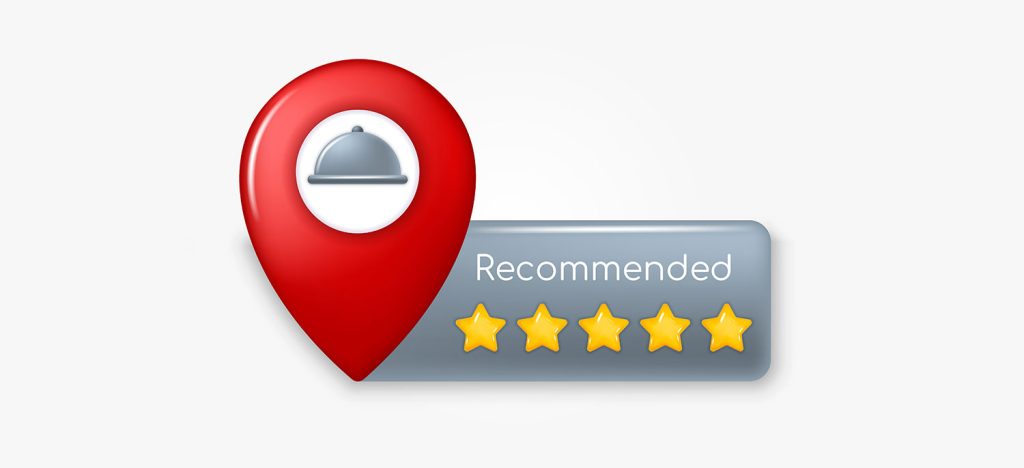In today's competitive landscape of local businesses, where the vast majority of your customers choose the business they will visit online, the Google Reviews are of paramount importance if you seek to gain credibility to attract them. The online reviews visible on Google Maps can have a significant impact on your online reputation and consumer decisions according to extensive studies on their behaviour. However, calculating the average Google score is not as simple as it seems. This article delves into how Google Reviews are calculated, shedding light on the complex mechanisms that take place.
Understanding Google reviews
Google Reviews are user-generated ratings and reviews that provide feedback about their experiences with businesses listed on Google Reviews. Google Maps. These reviews are vital for local businesses, as they influence the perceptions of potential customers and can affect the search engine ranking. For consumers, these reviews provide valuable information about the quality of the products or services offered by businesses, helping them to make a choice.
So how does your Google score go up?
How the scoring system works

At first glance, the star rating system may seem simple: customers leave a rating of one to five stars and the average of these ratings is the overall star rating of the business. However, Google's approach to calculating these ratings is more complex than a simple arithmetic average. Although the exact algorithm remains a closely guarded secret, it is understood that Google uses a sophisticated methodology that takes into account a number of factors, such as how recent the reviews are, the relevance and reliability of the reviews to ensure that the overall average score accurately reflects the quality of the business.
In the next sections, we'll explore the factors that affect your average Google Maps score and the strategies businesses can use to improve their ratings.
Stay tuned as we dive deeper into how your average score is calculated and how businesses can take advantage of this system to boost their online presence and reputation.
Factors affecting the scoring system
Google's algorithm for calculating star ratings is multi-faceted, designed to provide a fair and accurate representation of the quality of a business. Until 2017, Google calculated the average rating using the Bayesian average, but that has now stopped. So now Google calculates your score not only from your average but also from other factors so that the score truly reflects the quality of the business. Although the specific details of the algorithm are not publicly disclosed, the following factors are widely understood to play critical roles:
- Quality of criticism: Google prioritises high-quality, detailed reviews by taking into account the length and text of each review, indicating that more detailed reviews have a greater impact on the overall score. So text and image ratings are definitely reviews that carry the most weight.
- Recent reviews: Recent valuations carry more weight in the calculation, reflecting the current state of the business. This makes sense as if a business has had thousands of positive reviews for consecutive years but in the last 2-3 months has had too many negative reviews, is it still a good choice for Google users looking for a reputable business?
- User loyalty: The frequency and volume of reviews also contribute, with businesses that receive frequent and consistent reviews seeing the positive impact on their ratings more directly.
- Verified purchases: The reviews left by verified users may be given more importance, as they indicate a confirmed interaction with the business. One weight is given to a review of someone who created a Google account in the last month, and another weight is given to a review of a years-old account that frequently leaves reviews of local businesses.
The role of listings and the online presence of local businesses

An optimized Google Company Profile Google Company Profile is necessary to receive all the benefits. An up-to-date and complete profile not only improves the visibility of a business, but also its credibility, both by potential customers and Google's local algorithm. The key aspects include:
Consistent information

Make sure the opening hours, location and contact details are up to date on all your online listings. To get started, consider these tips:
- Regular checks: Schedule weekly or monthly reviews of your business listings on all platforms, not just Google, to ensure the accuracy of the information. Wherever you are registered, Google knows it. It doesn't care if you know it. So you need to be constantly looking for new listings of your business online.
- Exploitation of technology: Use management software or platforms that allow you to have one administrator so that you can easily manage business data across multiple directories with ease.
- Customer comments: Encourage and monitor customer feedback on any inaccuracies they may notice in your business information.
- Staff training: Make sure your team understands the importance of consistent information and knows how to update details where required.
There are several more, but if you follow these first steps, you can greatly improve the accuracy of your business information, making it easier for customers to trust and interact with your business.
Interaction

Responding to response to reviews, both positive and negative, shows that a business values customer feedback and is committed to improving service quality.
For businesses that aim to harness the power of customer feedback, actively managing reviews is a critical factor. This process involves not only monitoring what customers are saying online, but also carefully responding to their feedback. See how to get started:
- Setting up notifications: Use tools to receive notifications when new reviews are posted so you can respond immediately.
- Answer to all: Whether the review is positive or negative, thank the reviewer for his/her comments. This acknowledgement is the first step in showing that you value their contribution.
- Address the concerns their: For negative reviews, accept the customer's experience and offer to solve their problems. This can often turn an unhappy customer into a happy one.
- Highlight the positives: When you respond to positive reviews, you reinforce the specific positives they mention. E.g. did the customer mention that they really liked your shrimp pasta? Include in your response keyword "shrimp pasta." This not only validates their experience, but also highlights your strengths to your potential customers.
- Keep a level: Always maintain a professional tone, even when faced with malicious criticism. The way you answer to negative feedback can significantly affect the perception of your business.
Actively managing Google reviews is not just about handling what has already been said. It's about building an ongoing dialogue that can lead to improved service quality and customer satisfaction.
Quality photos and updates

Regularly updating your company profile with high-quality photos and posts can increase loyalty and positively influence ratings. To improve your business profile with quality photos and updates, the beginning is the half of everything and can lay the foundation for increased interaction with your profile and improved rankings in local results. Here are a few tips to get you started:
- Evaluate your current content: Start by looking at the existing photos and posts in your profile. Understand what works well and replicate it, but also identify areas for improvement in content that doesn't have much appeal.
- Design your content: Develop a content calendar that outlines the types of photos and updates you will post and when. This ensures a steady stream of fresh content.
- Focus on quality: Invest in high-quality photography. Clear, well-lit photos that positively present your business are vital. Remember that this is your business's shop window. Consider hiring a professional photographer if necessary.
- Promote what makes you unique: Use your photos and updates to highlight what makes your business stand out. This could be your team, your process, special events or how the business as a whole works.
- Attract your audience: Encourage interaction with your posts by asking questions or encouraging users to share their experiences. Interaction can further enhance the visibility of your company profile.
- Use the feedback: Notice which types of posts and photos have the most interaction. Use these observations to improve your content strategy over time.
By starting with these steps, you can create an enviable and attractive online presence that not only attracts more customers but also positively impacts your Google rankings.
Strategies to improve your Google Maps score

Improving Google star ratings is not something that will magically happen on its own. Customer reviews are golden. Not only do they provide feedback on the quality of the business, but they also influence potential customers and improve online visibility. Here's how you can encourage satisfied customers to leave positive reviews, thereby offsetting any negative feedback you may receive. Here are some strategies:
- Encourage reviews: Ask satisfied customers to leave a review. A higher volume of positive reviews can reduce the impact of negative ones. Only 14% of respondents never write reviewsso keep asking!
- Understand the Importance: Recognise that every criticism is an opportunity for improvement and a chance to highlight the strengths of your business. Positive reviews can significantly improve your reputation and attract more customers.
- Make it easy: The simpler you make it to leave a review, the more likely your customers are to do so. Provide clear instructions or direct links via QRCode on the Google review page, the TripAdvisor or wherever else you get reviews online.
- Ask at the right time: Time is critical. Request an assessment when customer satisfaction is at its peak, such as immediately after receiving excellent service or a compliment on your product or service. It is not good practice to have some promotional material on the table asking your client to leave you a review when they have not received your services.
- Multi-channel leverage: Use every available communication channel to request reviews-checks via email, SMS and social media can be effective.
- Personalisation of the request: Personalised requests can make a big difference. Tailor your message to reflect the customer's experience, making it clear that you value their feedback.
- Offer moral incentives: Although offering incentives for reviews may be a "grey area" and against the policies of some platforms, you can encourage participation in comment surveys that may lead to reviews. Make sure that any incentives comply with the guidelines of the review platform. You won't run into any problems if your incentive is for a business review, regardless of whether the customer reviews you positively or negatively. Conversely, an incentive that requires you to be rated with 5 stars alone is something that can get the business in trouble and lose its Google company profile.
- Treat negative criticism constructively: Deal with and resolve any issues highlighted in negative reviews. Not only can this turn an unhappy customer into a satisfied one, but it also shows potential customers that you value the feedback and are committed to improvement.
- Monitoring and responding to reviews: Check your reviews regularly and respond to them. This dedication can encourage others to leave feedback, knowing that their opinions are valued and acknowledged.
- Train your staff: Make sure your staff understand the importance of reviews and how they can encourage customers to submit positive feedback. A team that provides excellent service is more likely to create experiences worthy of review.
- Shout it out: Share your positive reviews through marketing activities, on social media and on your business premises. This not only shows the quality of your business but also encourages others to share their experiences.
By adopting these strategies, businesses can improve their digital footprint, the quality of their services and create a stronger, more positive online presence. Encouraging satisfied customers to share their experiences is an ongoing process that, when done right, pays off eaxxactly in terms of business growth.
Understanding and actively managing Google Reviews is vital to the success of a business in the digital marketplace. While the specifics of Google's review algorithm remain unknown, it is clear that a combination of high quality, recent reviews and an optimised online presence can positively influence these ratings. By adopting customer interaction strategies and encouraging positive feedback, businesses can improve their Google star ratings, thus enhancing their online reputation and attracting more customers.



